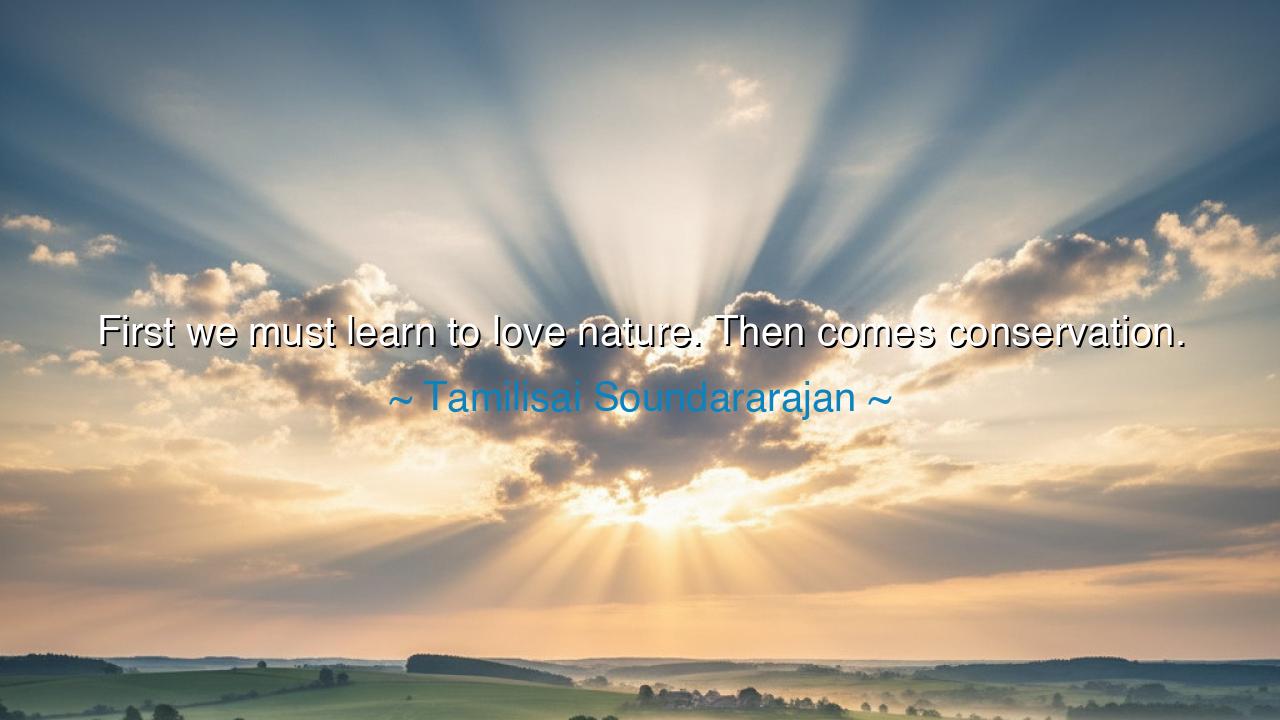
First we must learn to love nature. Then comes conservation.






In the words of Tamilisai Soundararajan, there is a call that resounds with the simplicity of truth and the depth of eternity: “First we must learn to love nature. Then comes conservation.” Here lies the order of wisdom: before the work of protecting, there must be the awakening of the heart. For without love, conservation becomes duty alone, and duty without devotion is brittle and short-lived. But when love flows first, every act of protection becomes a joy, every sacrifice becomes natural, and conservation transforms from labor into worship.
The origin of this insight rests in the ancient bond between humanity and the earth. Long before laws, before policies, before the language of science, our forefathers and foremothers revered the rivers as mothers, the mountains as guardians, the forests as temples. They did not speak of “conservation” as a separate practice, because love for nature was woven into their lives. It is only when this love has grown dim in modern times that the word “conservation” had to be invented, to remind us of what we should never have forgotten.
Consider the tale of the Chipko Movement in India during the 1970s. Villagers, many of them women, embraced the trees with their very bodies, refusing to let them be cut down by loggers. They did not act because of textbooks or policies—they acted because they loved the forest that gave them water, firewood, and life itself. Their love gave them courage, and their courage gave birth to conservation. It was not reason alone but affection for nature that stirred them to rise in her defense.
This truth has been echoed across history. In Japan, the practice of shinrin-yoku—“forest bathing”—arose not as science but as reverence, an immersion of the spirit in the quiet of trees. In Native American traditions, every hunt was accompanied by prayers of gratitude, honoring the earth that sustains. These peoples show us what Soundararajan’s words mean: without love for the living world, conservation becomes only regulation, but with love, it becomes a sacred covenant.
The emotional heart of the teaching lies in its order: love first, action second. If one tries to conserve without loving, one may tire, complain, or give up when the cost is great. But if one first falls in love with the sunrise over the mountains, with the song of a bird, with the rhythm of rain upon the soil, then to protect these is no longer a burden—it is as natural as protecting one’s own child. Love makes conservation inevitable.
The lesson is clear: awaken in yourself and in your children a love for nature. Spend time not only working for the earth, but walking with her, listening to her, rejoicing in her. Let your children touch the soil, hear the wind, watch the stars. For from such love springs the desire to preserve. If you love, you will protect; if you do not love, you will exploit. That is the eternal equation.
Practically, this teaching invites us to live differently. Before speaking of policies and debates, begin by rekindling your own relationship with nature. Plant trees not only for shade but as companions. Walk in silence among rivers and mountains. Support conservation movements not only out of obligation, but because they safeguard what your heart cherishes. Teach society that conservation is not merely the work of governments, but the fruit of every individual who has learned to love.
Thus, Soundararajan’s words echo like a song from the ancients: love before law, affection before action, reverence before regulation. Carry this wisdom with you, O seeker of truth, and let your love for the earth be the fountain from which all your conservation flows. For only when the heart bows in love to nature will the hands have the strength to protect her.






AAdministratorAdministrator
Welcome, honored guests. Please leave a comment, we will respond soon